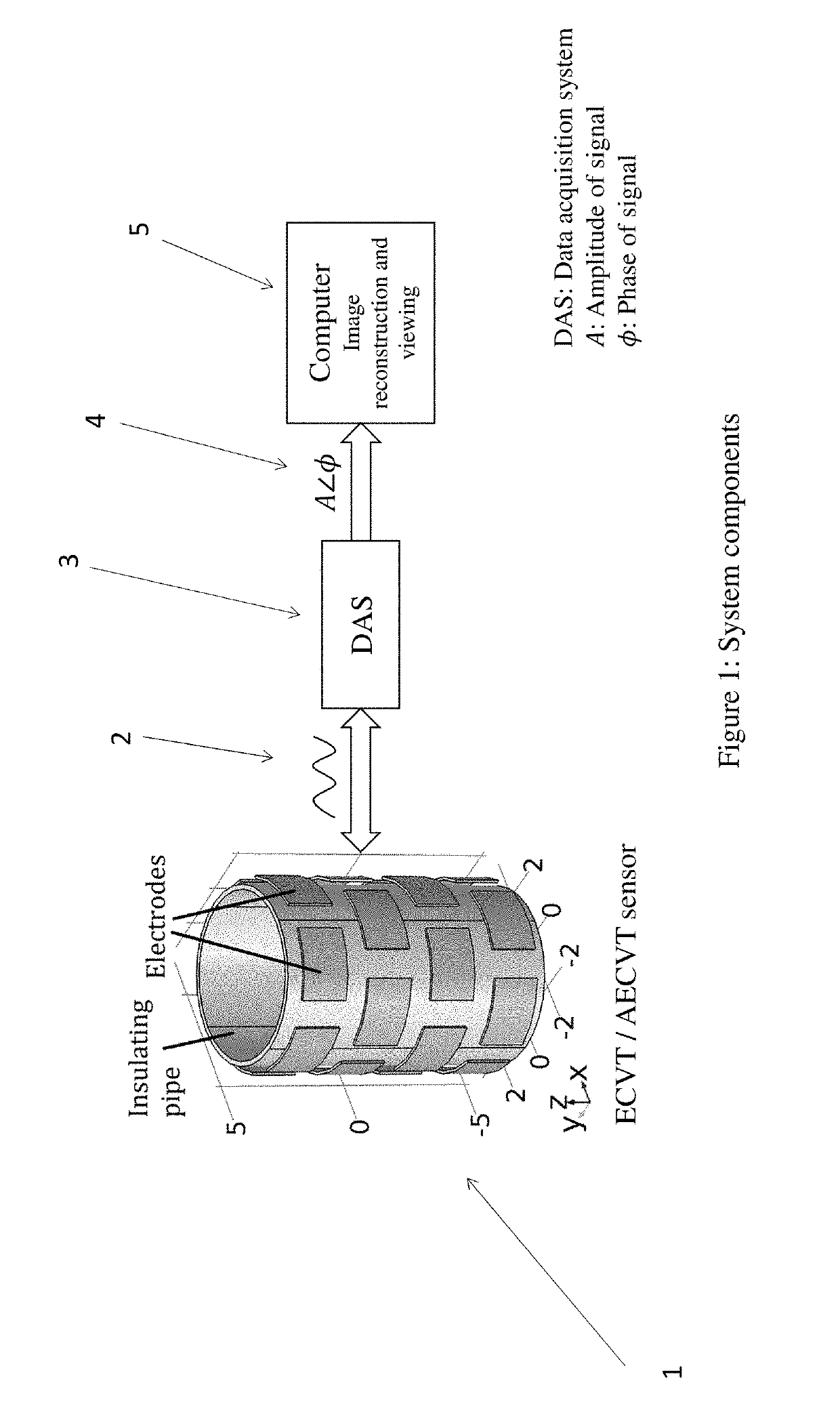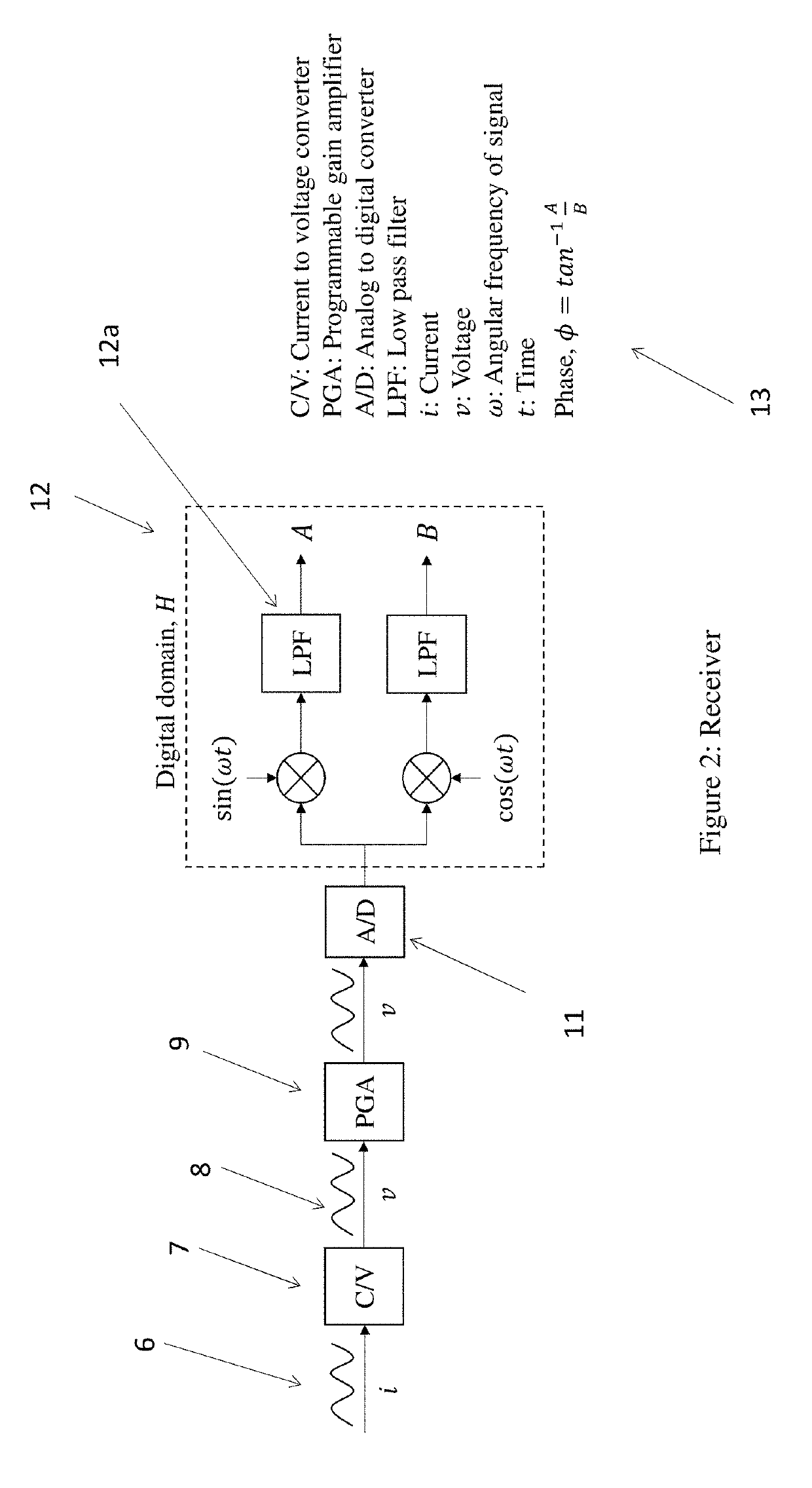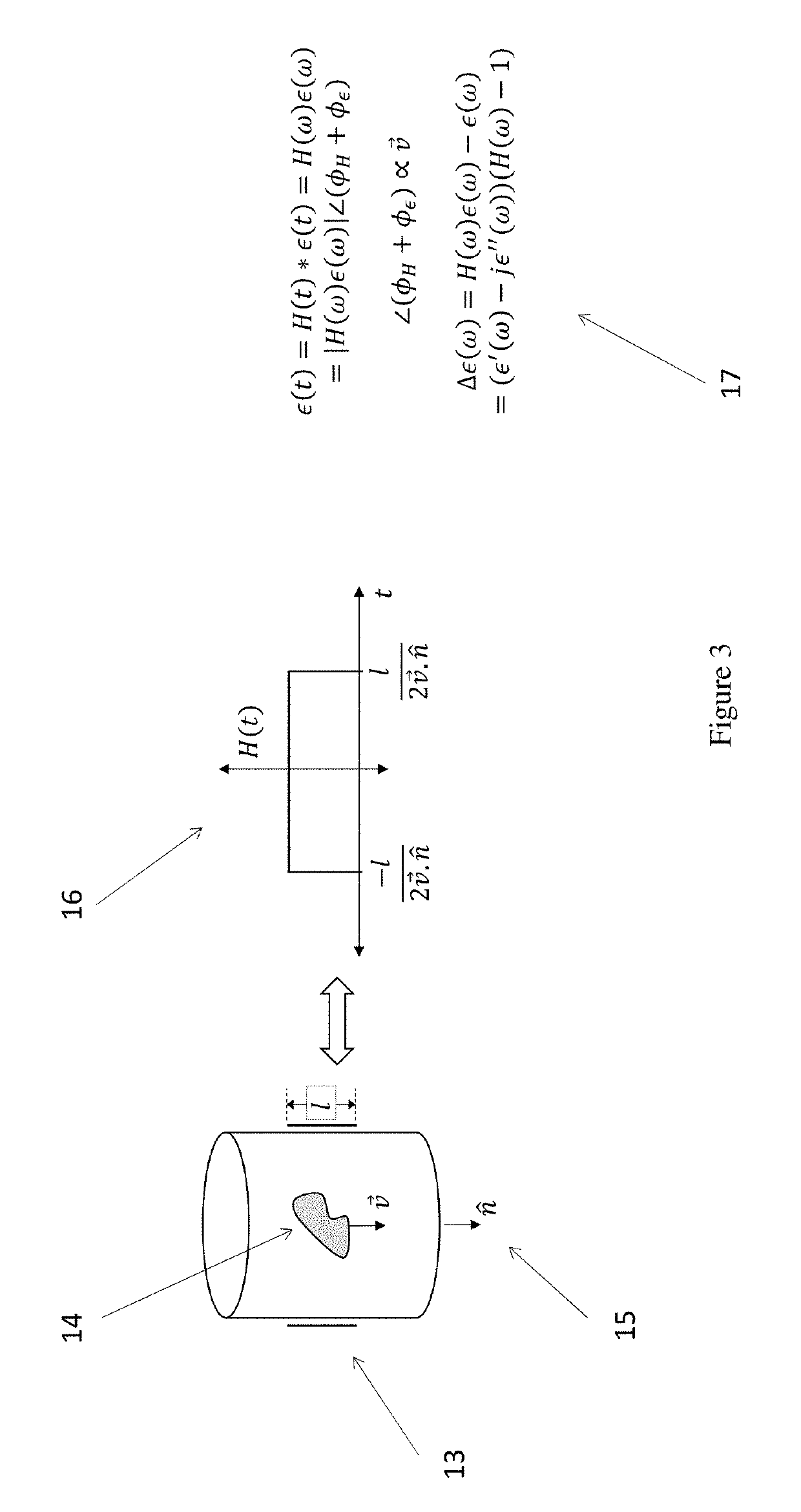Displacement current phase tomography for imaging of lossy medium
a lossy medium and current phase technology, applied in the direction of liquid/fluent solid measurement, instruments, material analysis, etc., can solve the problems of reducing the area of each sensor plate accordingly, reducing the imaging resolution when compared to hard field tomography, etc., to achieve scalability to different process vessels, high imaging speed, and more capacitance data
- Summary
- Abstract
- Description
- Claims
- Application Information
AI Technical Summary
Benefits of technology
Problems solved by technology
Method used
Image
Examples
Embodiment Construction
)
[0043]The following detailed description of the example embodiments refers to the accompanying figures that form a part thereof. The detailed description provides explanations by way of exemplary embodiments. It is to be understood that other embodiments may be used having mechanical and electrical changes that incorporate the scope of the present invention without departing from the spirit of the invention.
[0044]FIG. 1 illustrates one embodiment of DCPT system composed of sensor (1), DAS (3), and computing device for image reconstruction and data analysis (5). The DAS receives a sinusoidal signal from sensor (2) and reports its amplitude and phase (4) to computing device. In this invention, the phase signal is used for image reconstruction, velocity mapping, and data analysis. Material inside the sensor imaging domain is with conductivity or dielectric loss. The reported phase from different sensor plate combination depends both on the material property and its location in the ima...
PUM
| Property | Measurement | Unit |
|---|---|---|
| electric field distribution | aaaaa | aaaaa |
| volume | aaaaa | aaaaa |
| capacitance | aaaaa | aaaaa |
Abstract
Description
Claims
Application Information
 Login to View More
Login to View More - R&D
- Intellectual Property
- Life Sciences
- Materials
- Tech Scout
- Unparalleled Data Quality
- Higher Quality Content
- 60% Fewer Hallucinations
Browse by: Latest US Patents, China's latest patents, Technical Efficacy Thesaurus, Application Domain, Technology Topic, Popular Technical Reports.
© 2025 PatSnap. All rights reserved.Legal|Privacy policy|Modern Slavery Act Transparency Statement|Sitemap|About US| Contact US: help@patsnap.com



